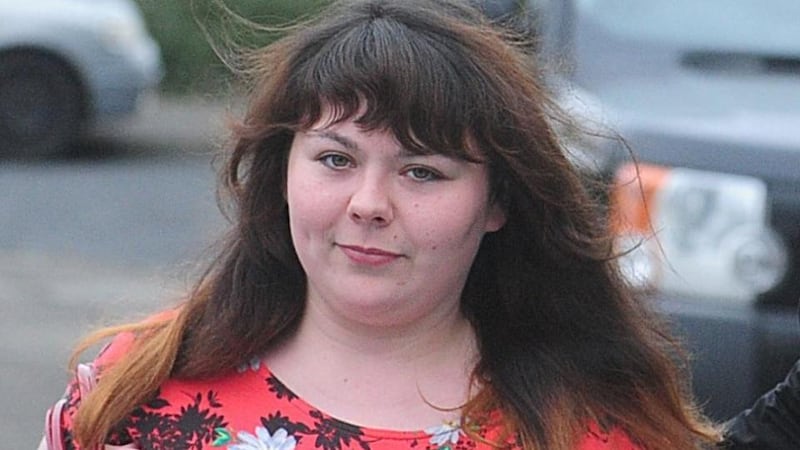Katelyn Keenan-McCarthy. Nathan Molyneaux. Joshua Keyes. Mark Molloy. Mary Kate Kelly. Five babies who should have been able to look forward to full and healthy lives. Five babies who died between 2006 and 2013 as a result of poor care provided in an Irish hospital.
The run up to the publication on Friday May 8th of the long-awaited and much-delayed report on standards at Portlaoise hospital was been dominated by rows about its content. These pitched an outraged Health Service Executive (HSE), the main target for criticism in the report, against the Health Information and Quality Authority (Hiqa), which has drawn it up.
The two State bodies even held rival press conferences on the morning of the report’s publication, and while the HSE didn’t carry out its threat to injunct the report, the row is sure to continue.


Ultimately, though, this story is not about a turf war between two State agencies or about the heavily funded machinations of bureaucrats and their advisers.
What it really concerns is the needless loss of five young lives, and perhaps many others. It is also the story of how five families, though struggling in their darkest hour, were obstructed in their search for the truth until, through determination and luck, they found they were not alone and gained strength in unity.
The deaths share a number of features. The babies had developed relatively normally, with no congenital abnormalities, until they reached the maternity ward of Midland Regional Hospital, in Portlaoise.
There staff struggled to interpret the traces produced by the cardiotocograph, a device used to monitor the baby’s heartbeat and the mother’s contractions. In some cases Syntocinon, a drug designed to progress labour, continued to be administered even though it reduces the supply of blood to the brain.
Syntocinon, a brand name for oxytocin, reduces the amount of time mothers are in labour and helps the womb contract after a Caesarean section, but mother and baby need careful monitoring to prevent complications such as foetal distress.
It was the quality of this monitoring that proved so problematic in Portlaoise. All the cases involved anoxia – oxygen starvation to the brain – which can have enormous, often fatal consequences.
After their babies’ deaths, the treatment of the women and their partners in such a distressing situation often fell short of the standards you’d expect from a caring health service.
The couples were left in the dark for months and even years about what had really happened during their time in the maternity unit. They were left nonplussed by the findings of postmortems. They struggled to win the right to have the deaths of their babies properly investigated.
They were never told there were other cases just like their own; in fact, some were told the opposite.
Mark
That we now know all this owes much to the determination of a Co Offaly woman, Róisín Molloy, and her husband, Mark, who lost their fifth son, also Mark, just 22 minutes after he was born in Portlaoise in January 2012.
“He was a fine, beautiful little fellow”, with the same features as his brothers, Róisín Molloy later told Mark’s inquest in December 2013. It heard evidence that staff should have responded to evidence of foetal distress by delivering Mark up to two and a half hours earlier than they actually did.
The Molloys say they were told that Mark was stillborn and that there would be no inquest. They were also told that it was rare for a baby to die at the hospital. Yet their three-year quest for answers revealed a quite different picture. They not only obtained an inquest but also discovered that they were far from being alone in having endured substandard care at the hospital.
“They tried to block the inquest by saying Mark was stillborn and he wasn’t entitled to a coroner, but we were able to establish from hospital records he had a heartbeat at birth and it was recategorised as a neonatal death,” Mark Molloy says.
Nathan
Róisín Molloy searched the internet and came across the case of
Natasha Molyneaux
, from Tullamore, whose son Nathan died six days after a traumatic delivery in July 2008.
Nathan Molyneaux had been delivered at Midland Regional Hospital, in Portlaoise. Nathan was rushed to the Coombe Women & Infants University Hospital, in Dublin, suffering from the effects of oxygen deprivation.
As with Mark Molloy, his mother was given Syntocinon to speed up labour, thereby reducing his blood supply. Until then Natasha Molyneaux’s search for answers had been futile and, she says, the doctor involved refused to speak to her.
Joshua
Then, one day, Róisín Molloy heard another woman,
Shauna Keyes
, talking on local radio about an effort to raise money for a “cold cot”, a piece of medical equipment that allows parents to prolong the time they can spend with a baby who has died at birth.
In the interview Shauna Keyes talked about losing her own baby, Joshua, an hour after being delivered by Caesarean section in October 2009 – at the same Portlaoise hospital.
The Molloys got in touch and found that the death of Joshua, about three years before their own son’s death, bore many similarities. Aside from the continued use of Syntocinon when the foetal heartbeat was slowing down, there was also a delay in carrying out the Caesarean.
Shauna Keyes was given various reasons for her son’s death: his organs were too heavy; he showed signs of Down syndrome and wouldn’t have survived; a heavy blow during pregnancy might have caused his death.
By now the families were in regular contact and were being supported by the advocacy group Patient Focus.
The Irish Times attended Joshua Keyes's inquest in Portlaoise, in September 2013, when the coroner recommended the drawing up of national guidelines for the use of Syntocinon. Mark Molloy's inquest followed three months later, when the same coroner made similar recommendations about the use of the drug and about the provision of training for staff in the use of cardiotocographs.
The RTÉ's Investigations Unit brought the issue to national attention in a hard-hitting Prime Time programme broadcast in January 2014. That prompted action at government level, and the Department of Health's chief medical officer, Dr Tony Holohan, was given the job of examining the cases.
Holohan's report, produced speedily the following month, found that the maternity unit was unsafe and that families had been treated appallingly. A tearful James Reilly, as minister for health, bowed to public pressure and asked Hiqa to investigate.
Mary Kate
Yet still the human toll continued to mount. Amy Delahunt, from Borrisoleigh, Co Tipperary, realised, watching
Prime Time
, that the deaths featured had much in common with the stillborn birth of her daughter Mary Kate Kelly, in May 2013.
Delahunt and her partner, Ollie Kelly, had been trying for years to start a family, and were overjoyed when she became pregnant. At 34 weeks, concerned about a lack of foetal movement, she went to Portlaoise hospital because it was the nearest to her place of work.
Although the midwife was concerned about her cardiotocograph trace, she was overruled by the on-call registrar, who said it was normal. Amy Delahunt was discharged without seeing a consultant; she attended a scheduled appointment in Limerick the following day, when she was told that there was no heartbeat and that her baby was dead.
Katelyn
Meanwhile, another midlands family had started to ask questions after
Prime Time
. Sharon McCarthy’s sister rang her after watching the programme and said some of the details of a Baby X that featured in it sounded eerily familiar.
Sharon McCarthy discovered that Baby X was in fact her daughter Katelyn, who died at 10 months following complications during her birth in Portlaoise in November 2006. The HSE had investigated the death of Baby X – and two others – but had never told the family.
Despite contacting the hospital the family received no answers, she said. “I even got my solicitor on to it, and she was getting nowhere. And that was going on two and a half, three years with the solicitor, and I was wondering then, Why is it? She hit a brick wall, basically.”
Other babies
The focus on maternity standards at Portlaoise has, understandably, raised concerns among other women who gave birth there and among yet more women who experienced difficult deliveries at other hospitals. Dozens of these cases are under review.
Another investigation has begun into the maternity unit at Portiuncula Hospital, in Ballinasloe, where many of the same shortcomings as were found in Portlaoise have been identified.
Despite all these deaths consistent guidelines still aren’t in place for the use of Syntocinon at all hospitals, as the State Claims Agency recently noted.
Though deeply unhappy with Dr Tony Holohan’s report, the HSE was forced to hold its fire because it was published so shortly after the uproar that followed the RTÉ programme.
A year later, it was sufficiently emboldened to challenge Hiqa before its report was published. Hiqa’s central findings – that blame attaches to all levels of HSE management, right up to the top – rankle deeply among health bosses.
The HSE view has been that the cases, although tragic, belong to the past. Austerity and cutbacks played a role in the staffing shortages that beset the hospital, the HSE says. Key staff have been replaced since the deaths, and senior experts have been drafted in from the Coombe women’s hospital in Dublin.
The maternity unit is now under the control of the Coombe, it points out, and standards will be raised through the association of Portlaoise with the Dublin Midlands Hospital Group, to which both it and the Coombe now belong.
Portlaoise’s perinatal mortality figures are among the best in the country, the HSE says. And although families were treated badly, these problems too are historical, it maintains.
In fact, while a memorandum of understanding on greater co-operation has been signed between Portlaoise and the Coombe, there has been no agreement yet about three crucial appendices that will set out the details of resources transfers and a possible indemnity for the Coombe against historical cases.
It is also a fact that the Dublin Midlands Hospital Group – one of seven regional groupings of Irish hospitals – is little more than a shell, with a chief executive and chairman but no board and no real power.
In any case, Mark Molloy snr says he doesn’t trust the HSE’s assurances. The five families whose children died after their births in Portlaoise have waited anxiously for the independent voice of the Hiqa report. They have stayed in touch, meeting regularly and appearing on local radio to keep the issue live.
It isn’t just the truth of what really happened at the hospital that they want; they also hope to ensure that no one else will go through what they went through. Molloy says he would like to ensure that this happens through the creation of an independent patient-safety agency for the health service, outside the control of the HSE. This is a key recommendation of the just-published Hiqa report, and the HSE has promised to implement it.
Currently working during the week in the UK, he says his annual leave has been used up on meetings with the HSE. The couple have to have their four boys minded when they need to travel to Dublin to meet the HSE.
The commitment grows; Róisín Molloy and Shauna Keyes have just been appointed to the steering group for the national maternity strategy.
“It’s tough,” Mark Molloy says. “But after these years there’s a lot of ‘I can’t let the feckers get away with it’ about it.”











